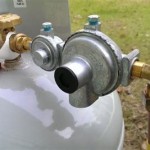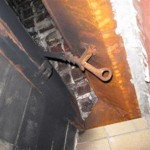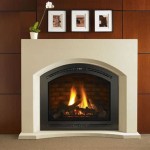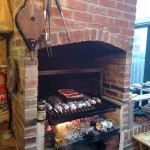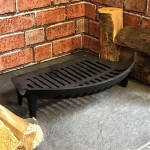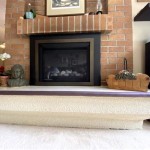Choosing the Right Paint For Fireplace Stone
Fireplace stone, whether natural or manufactured, can significantly enhance the aesthetic appeal of a living space. Over time, however, the stone may appear dated, discolored, or simply no longer align with the homeowner's evolving design preferences. Painting fireplace stone provides a viable and relatively cost-effective method for updating its appearance. Selecting the correct type of paint is crucial for achieving a durable, attractive, and long-lasting finish. Understanding the properties of different paints, the surface preparation requirements, and appropriate application techniques are all essential components of a successful fireplace stone painting project.
The inherent characteristics of stone pose unique challenges when compared to painting smoother surfaces like drywall or wood. Stone is porous, textured, and can be exposed to significant temperature fluctuations from the fireplace itself. These factors necessitate the use of specialized paints designed to withstand these conditions and properly adhere to the stone surface. Failing to choose the correct paint can lead to peeling, cracking, discoloration, and ultimately, a less than satisfactory outcome. This article explores the key considerations for selecting the appropriate paint for fireplace stone, ensuring a durable and aesthetically pleasing result.
Understanding Paint Properties and Types
The foundation of a successful fireplace stone painting project lies in comprehending the properties of different types of paint and how they interact with the stone surface. Two primary categories of paint are commonly considered: latex-based acrylic paints and high-heat paints. Each has its own set of advantages and disadvantages depending on the type of stone, the proximity to the firebox, and the desired aesthetic.
Latex-based acrylic paints are a popular choice for interior painting projects due to their durability, ease of application, and relatively low odor. They offer excellent color retention and are typically easier to clean than oil-based paints. Acrylic latex paints are also more flexible than oil-based options, which can be beneficial for stone surfaces that may expand and contract with temperature changes. However, standard interior latex paints are generally not suitable for areas directly adjacent to the firebox or flue, as they are not formulated to withstand extreme temperatures.
High-heat paints, also known as stove paints or engine paints, are specifically designed to withstand high temperatures. These paints are formulated with heat-resistant pigments and resins that can withstand temperatures up to 1200°F (649°C) or higher. They are typically available in spray cans and are ideal for painting the interior of the firebox, the firebox opening, or any stone surfaces that come into direct contact with flames or significant radiant heat. It is essential to select a high-heat paint that is specifically designed for the intended application, as not all high-heat paints are created equal.
Another important consideration is the paint's finish. Matte finishes are generally preferred for fireplace stone as they tend to hide imperfections and provide a more natural look. Semi-gloss or gloss finishes, while more durable and easier to clean, can appear too shiny and artificial on stone. The choice of finish ultimately depends on the homeowner's personal preference and the overall design of the room.
Furthermore, understanding the Volatile Organic Compound (VOC) content of the paint is crucial. Lower VOC paints are generally preferred for interior applications as they release fewer harmful chemicals into the air. This is particularly important in enclosed spaces like living rooms. Choosing a low-VOC paint contributes to a healthier indoor environment.
Finally, consider the paint's resistance to efflorescence, a white, powdery deposit that can form on masonry surfaces due to moisture and salt migration. Paints formulated to resist efflorescence can help prevent this unsightly problem and maintain the appearance of the painted stone for longer.
Preparing the Stone Surface for Painting
Proper surface preparation is arguably the most critical step in ensuring a long-lasting and aesthetically pleasing paint job on fireplace stone. Neglecting this stage can lead to poor adhesion, peeling, and an overall unsatisfactory result. The preparation process involves cleaning, repairing, and priming the stone surface before applying the final coat of paint.
The first step is to thoroughly clean the stone to remove any dirt, dust, soot, grease, or other contaminants. This can be accomplished using a stiff brush and a solution of water and mild detergent. For stubborn stains or soot deposits, a specialized masonry cleaner may be necessary. It is essential to rinse the stone thoroughly with clean water after cleaning to remove any lingering detergent residue. Allow the stone to dry completely before proceeding to the next step.
After cleaning, inspect the stone for any cracks, chips, or other damage. Repairing these imperfections is crucial for creating a smooth and uniform surface for painting. Small cracks can be filled with a masonry crack filler, while larger chips may require the use of a patching compound. Allow the repair material to dry completely according to the manufacturer's instructions before sanding it smooth to blend with the surrounding stone.
Priming the stone is an essential step that should not be skipped. Primer helps to improve paint adhesion, seal the porous surface of the stone, and create a uniform surface for the topcoat. Choose a primer specifically designed for masonry surfaces. Apply the primer evenly using a brush, roller, or sprayer, ensuring that all surfaces are adequately covered. Allow the primer to dry completely before applying the paint. Consider using a tinted primer that is close to the color of the topcoat. This can help to achieve better color coverage and reduce the number of coats of paint required.
For particularly porous stone, multiple coats of primer may be necessary to achieve adequate sealing. After the first coat of primer has dried, inspect the surface for any areas where the primer has been absorbed unevenly. Apply a second coat of primer to these areas to ensure a uniform surface for painting.
Finally, before applying the paint, lightly sand the primed surface with fine-grit sandpaper to remove any imperfections and create a smooth surface for the topcoat. Wipe away any sanding dust with a clean cloth before proceeding.
Application Techniques for Painting Fireplace Stone
Applying the paint correctly is as important as choosing the right paint and preparing the surface properly. The application technique can significantly impact the final appearance and durability of the painted fireplace stone. Considerations include the choice of application method (brush, roller, or sprayer), the number of coats to apply, and the proper drying time between coats.
The choice of application method often depends on the texture of the stone and the desired finish. For smooth or relatively smooth stone, a roller can be used to apply the paint quickly and evenly. Choose a roller with a nap appropriate for the texture of the stone. For rough or highly textured stone, a brush may be necessary to ensure that the paint reaches all crevices and irregularities. A sprayer can also be used for textured stone, but it requires careful masking and proper ventilation to avoid overspray. When using a sprayer, it's crucial to test the spray pattern and adjust the nozzle appropriately to achieve a uniform coat.
Apply the paint in thin, even coats, avoiding drips and runs. Multiple thin coats are always preferable to a single thick coat, as they dry more evenly and are less prone to cracking or peeling. Allow each coat of paint to dry completely according to the manufacturer's instructions before applying the next coat. This is crucial for ensuring proper adhesion and preventing the paint from becoming tacky or uneven.
The number of coats of paint required will depend on the color of the paint, the color of the stone, and the opacity of the paint. In general, two coats of paint are sufficient to achieve full coverage, but darker colors may require three or more coats. Always allow each coat to dry completely before assessing the need for an additional coat.
When painting around the firebox opening, use painter's tape to protect adjacent surfaces. Apply the tape carefully and firmly to create a clean line. Remove the tape immediately after applying the paint, before it has a chance to dry. This will help to prevent the paint from peeling or chipping when the tape is removed.
For intricate details or hard-to-reach areas, use a small brush to apply the paint carefully and precisely. Be patient and take your time to ensure that all areas are adequately covered.
Finally, after completing the painting project, allow the paint to cure completely before using the fireplace. This will allow the paint to fully harden and bond to the stone surface, maximizing its durability and longevity. Consult the paint manufacturer's instructions for the recommended curing time.
By carefully selecting the appropriate paint, thoroughly preparing the stone surface, and applying the paint using proper techniques, homeowners can successfully update the appearance of their fireplace stone and create a beautiful and inviting focal point in their living space.

How To Painting The Stone Fireplace White Greige Design

Black Painted Fireplace How To Paint Stone

Stone Fireplace Makeover Part 2 Faux Whitewash Organized Ish

How To Easily Paint A Stone Fireplace

Painted Fireplace Place Of My Taste

Painted Stone Fireplace Makeover The Little By Home

Painted Stone Wall In Black 42 Fireplace Styles That Will Add Warmth To Any Space Decoist Remodel Home Makeover

Black Painted Fireplace How To Paint Stone

How To Paint A Stone Or Brick Fireplace Easy Diy Building Bluebird

Painted Stone Fireplace Makeover The Inspired Room

